
What is a brand book?
This guide is about how to create a brand book for your small business in 2021, however let’s discuss first what’s a brand book! Brand book (brand guideline or style guide) is a set of rules that explain how your brand works, which are your main brand elements and what is the main goal of your brand. Brand books influence every marketing campaign, communication and products/services. They are like strategic guidelines, as it covers all the aspects of your brand. Overall, brand book serves the following purposes for your business:
- Improve your brand position
- Keep your whole team on message
- Add depth to your brand position by aligning it with your business strategy

Why every brand needs a brand book?
If you have a small company, you may think that a brand book is not so important to have, but every brand out there should have this style guide to make sure that all of their visual elements are consistent with each other. Suppose that you are the only designer in your company. You design all of the visual elements, like logo, website, business cards and other materials. Of course, you know all the elements and “rules” by heart. Now, suppose that after several years, you hire a second designer to handle some of your workload. In this case, you get the responsibility to teach this person all of the guidelines for the brand from your memory. However, it would be surely much easier if you could just give him the brand book, that contains everything he/she should know: colors, logo sizes and placement, fonts, etc. Another example is when you are a freelancer, who works with different clients. In this case, a brand book is a great way to return to work you have done several months ago, without the need to comb through your old files just for figuring out which color or font you used for that project. Instead, you can just open the brand book and see all the things you need to know in just a few seconds. A Brand book will help every single company by making their work more easier and consistent. Creating a brand book when you are working on a project is not something that consumes time, yet it can save you hours of work down the road.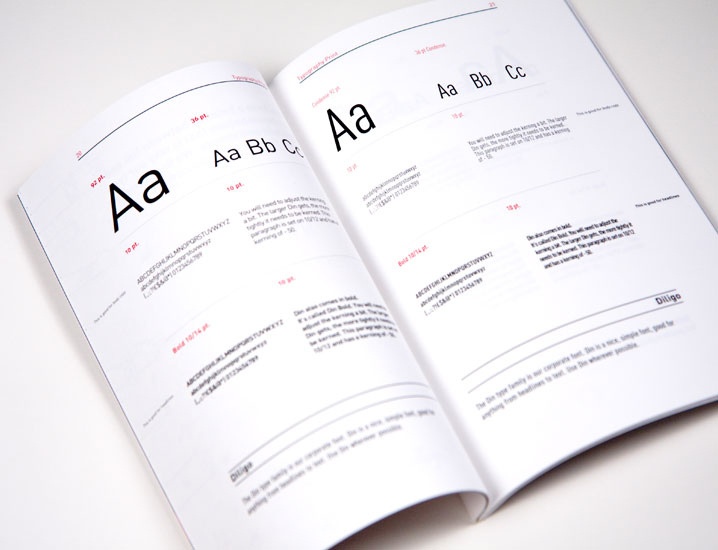
How long should the brand book be?
The length of brand books can vary a lot: from a single page to dozens of pages depending on the complexity of your company and the number of visual elements, marketing materials that are produced. For example, a simple website with single logo design, defined typography, colors and no offline materials can have a brand book which is just one page. However, a large company with many divisions and different marketing/advertising mediums is likely to have a really long brand book, which will clarify all of their usage guidelines. Overall, your brand book should be no longer than necessary, but long enough to effectively communicate all the important information about your brand’s visual style.
The top elements of brand book
While elements typical of brand books vary from industry to industry and from small to large companies, these are the main ones that you should include in your brand book.
- Brand introduction: This is like an introduction of the story behind your brand and how its visual identity has developed over time. Without it, without looking where you have been and where you are currently, it would be really difficult both for your long standing and new employees to understand where you are going.
- Logo guidelines: Logo is the most important thing in brand’s visual identity and it’s like the signature of the company. However, sometimes logos can be stretched, resized or recoloured in a wrong way without the right guidelines in place. Most brands have different logos to use in different places: coloured, black and white, for Web, for print, with tagline, vertical or horizontal. Without a brand book with clear guidelines about the colours, sizes, formats for all types of logos, it can be really confusion for your designers to remember every single thing.
Some brands are leveraging the power of QR codes to turn their logos into dynamic, interactive portals. By doing so, they can distribute promotional offline material that features their logo as a QR code, which customers can scan to access exclusive content or deals, such as product information and discounts. This approach allows brands to use their logos as an effective way to engage with potential customers and build stronger relationships with existing ones.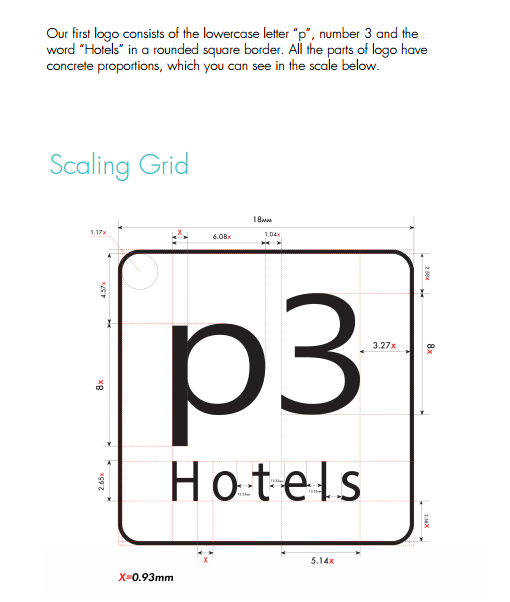
- Colour palettes: We associate every brand with certain colours. For example, we associate Coca Cola with red, Skype, Facebook – with blue, Apple – with black/white/grey and so on. Brand books should clearly dictate which colours the company should use to keep the brand identity.
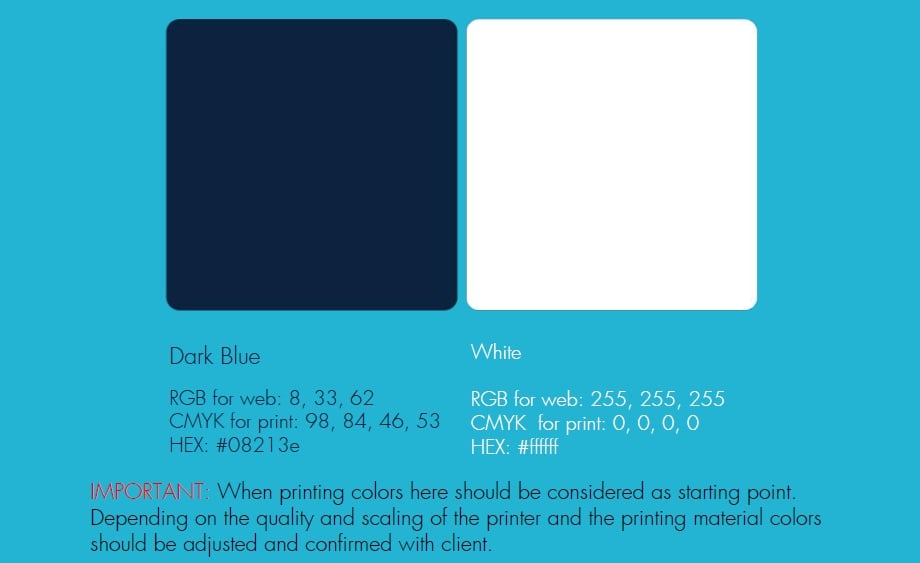
- Fonts: Like colours, every brand has its own set of typefaces which they use with logos in print and on the Web. Brand books clearly show examples of fonts along with thorough explanation of how and when to use them.
- Taglines: There are some companies which mix logos with taglines to communicate what the brand is about, who is their target market or which products/services they offer. Or, taglines are kept for using in specific campaigns, attached to email signatures or used in tv or radio advertisements. Because of the variety of use, brand books are useful for communicating to employees when and how taglines should be used.
- Copywriting: In your company you may have more than one copywriters who write content for your different campaigns. The tone, voice and style of all these content should be written in the same way. Brand books help writers establish a consistent style of writing, ensuring that each writer uses the words, sentence structures or grammar and punctuation in the same way.
- Photos and infographics: In this part of the brand book you should mention all the images that are acceptable to use in designs. For example, brands may wish to use images with muted colours and soft focus or images that have a clean look and white background, others may forbid the use of stock photography and give resource database for designers to choose photos from there.
- Page structures: You may think that it’s just about the company’s website, but it goes further than that. There are many brands that require that their brochures be tri-fold or that all adverts be comprised of thirds: one-third text and two-thirds images. So, make sure to write information about the page structures in your brand book as well.
- Public relation(PR) policies: This is a section in brand book that shows who is responsible for communicating the brand as a representative of the company, through which channel and by which means. For example, social media policies tell employees how they should respond to questions, complaints and how active they should be in social media networks.
- DOs and DON’Ts: This is a great section that is present in many brand books. This is a part that explains what you should do and should not do with the elements. For example, Skype’s old brand book had a page with “Words we like” and “Words we don’t like”. Or, Apple’s brand book has a page explaining what you cannot do with Apple logo.
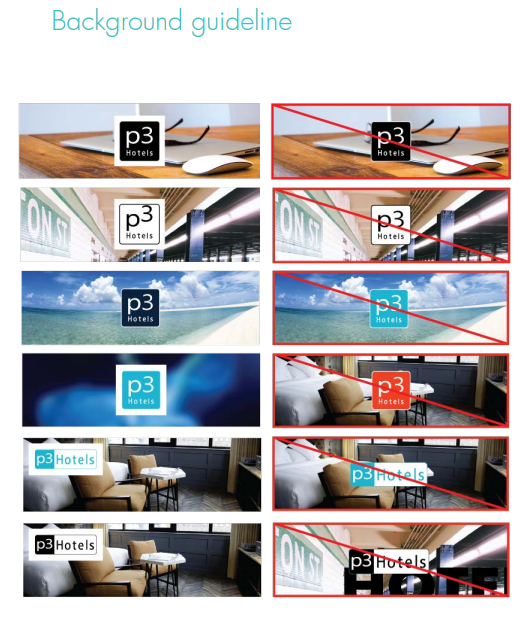 These elements explain how the brand communicates with its clients. if your brand is dynamic and cool targeted on young people, then you should use a joyful tone like Vimeo does. However if you are a more serious company, you need to indicate more traditional tone of voice in your brandbook.
These elements explain how the brand communicates with its clients. if your brand is dynamic and cool targeted on young people, then you should use a joyful tone like Vimeo does. However if you are a more serious company, you need to indicate more traditional tone of voice in your brandbook.
Top tips for designing effective brand books
To create a brand book that will be useful and attractive both for your team and for your customers is a huge challenge. However, there are some useful tips and if you stick to them, you can create a really powerful brand book. Here are some of the most effective tips:
- Decide for whom you create brand book
Before creating a brand book, you should clearly identify who are going to receive, read and use these guidelines. It’s really important to know your target audience, so you can tailor your content accordingly. For example, if you are going to distribute it outside of your team, make sure to not use any jargon or technical knowledge that would be difficult for others to understand. Write with friendly language that will attract and engage the audience.
- Keep it simple
If you want your guidelines to be embraced by all, then all you need to do is keeping it simple. You should make sure that what you is explained and included in your brand book can be easily understood by different groups of people: your employees, your partners, customers and even competitors. Of course, now it will take from you extra time to simplify the use of your brand book, but it will surely save a lot more time in the future.
- Think in a creative way
Brand books are like expression of brand’s creativity. There are no rules about creating brand books so you can use your creativity and, as a result, increase your brand’s awareness. For example, there is no rule that it should be in PDF format, so you can have the whole thing online. Try to use creative elements in your brand book, but make sure to not overcomplicate it. Remember to keep it simple.
- Design the book in your brand style
Your brand book should be truly the representative of your company, its culture and style of working. For example, if you are a fitness company with young, energetic and healthy positioning, then make sure that your brand book is not stuffy, dictatorial and boring. If you create a brand book for cartoon show, make it as fun, colorful and positive as that series. Or , if it’s for an asset management company, make it as clean and straightforward as possible.
- Be helpful and specific
Don’t leave room for misunderstandings in your brand book. Try to give helpful, practical and specific knowledge to the people reading your guide. For instance, if you include particular type of overlapping text or any kind of Photoshop treatment, then make sure to add page in your brand book which will explain exactly how it works.
- Keep track of where your brand is used
If you have created a new brand book and you made changes to your logo, fonts used, color palettes, etc., then you need to track back wherever the previous version has been used so that you can replace all the materials with updated version. For example, if you have a new logo, then you should change it in all websites, social networks, email footers, presentations, documents and so on.
- Make your materials available
To make sure that people won’t use old or wrong versions of your visual elements, make sure to open access to a library of correct files. Set up a download section on your website where all logos, current guidelines, images and other materials are stored. If you want, you can create a password to protect it, but believe us, it’s much easier to update one set of logos online compared to replying thousands of emails requesting these materials.
- Involve your staff
If you want your team to embrace your new brand, then they need to feel like it is theirs. They need to feel a part of it and clearly understand every single element in your brand book. For this purpose, create a project team consisting of employees from all levels in your company and ask regular feedback from them during brand guideline development. Find out whether they understand the document, what are the necessary improvement according to them, what you can do to make easier for them to use the brand book. Involving employees from all over your company can throw up some great issues that would never have been considered in the marketing department alone.
- Anticipate questions
At the end of your brand book, make sure to include some relevant contacts and email addresses of your staff. It’s necessary, because sometimes readers have some questions about the guide which they cannot figure out alone. By attaching some email addresses, you will fix this problem by having a team that would answer to all of the questions and concerns. In addition, also consider creating a FAQ part of the brand book and think about the top 20-30 questions people might ask when they first approach your brand.
- Review your brand book regularly
The main goal of brand books is to explain, advise and guide people to use and reproduce your brand. However, this does not necessarily mean that your brand is set in stone forever. Naturally, your brand will evolve and change over time, and your brand book should be revised and updated accordingly. When you update your brand book, make sure to include version number not only on the front page, but on every page. We could go on introducing hundreds of tips for creating effective brand books, but the ones mentioned above are the most important ones, which you should keep in your mind for creating an awesome brand guideline.
Tools for making great brand book
Our favourite tool that offers the best online branding tools to create high-quality videos, logos, mock-ups and websites is RenderForest. Our link below offers you a free trial to test their online brand building tools and start creating your brand for free.
Communicating the brand book
You could have a great brand book with multiple sections, great design and useful information in it, but it won’t be effective until people know that it exists. Before asking your employees to share and promote it, you need to first of all make sure that they understand it themselves. For this purpose, make sure that all employees have access to your brand book, especially designers and employees in marketing and communication departments. So, once brand and visual identities are established, spread the word to all of your employees through written communication and face-to-face meetings. Try to not only explain what the brand position is, but also why and how customers are going to benefit from it. Now, when your employees know every single detail about your brand book, encourage them to become brand ambassadors. To motivate them, consider rewarding them for showing acts of being ‘on brand’ with recognition programmes that reward positive performance connected with the brand. Managing the brand is not a static process, it’s active, ongoing, always evolving process, so make sure that your employees are aware of this and are ready to spread the word about your brand.
Great brand book examples
There are many awesome brand books out there on the Web, and each of them have their own positioning, style and purpose. To conclude our eBook, here we present the most appealing and creative brand books we have come across.
- Skype
- Swedish Armed Forces
- charity: water
- easy.com
- Nike Football
- Foursquare
- Unicef
- Adobe
- Mozilla
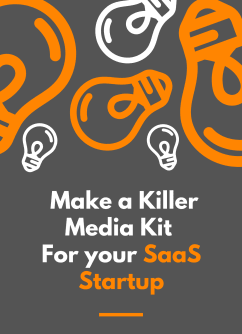 9-Point Checklist To Make a Killer SAAS Media Kit DOWNLOAD YOUR CHECKLIST
9-Point Checklist To Make a Killer SAAS Media Kit DOWNLOAD YOUR CHECKLIST
Tags:
SaaS Growth
November 6, 2020
![The Ultimate Guide To Your SaaS Website Localization: Conquering Foreign Markets [GUDIE 2021]](https://incredo.co/hs-fs/hubfs/Imported_Blog_Media/Untitled-1-3_18347020c4-Feb-21-2024-11-46-29-0365-AM.webp?width=520&height=294&name=Untitled-1-3_18347020c4-Feb-21-2024-11-46-29-0365-AM.webp)


Comments